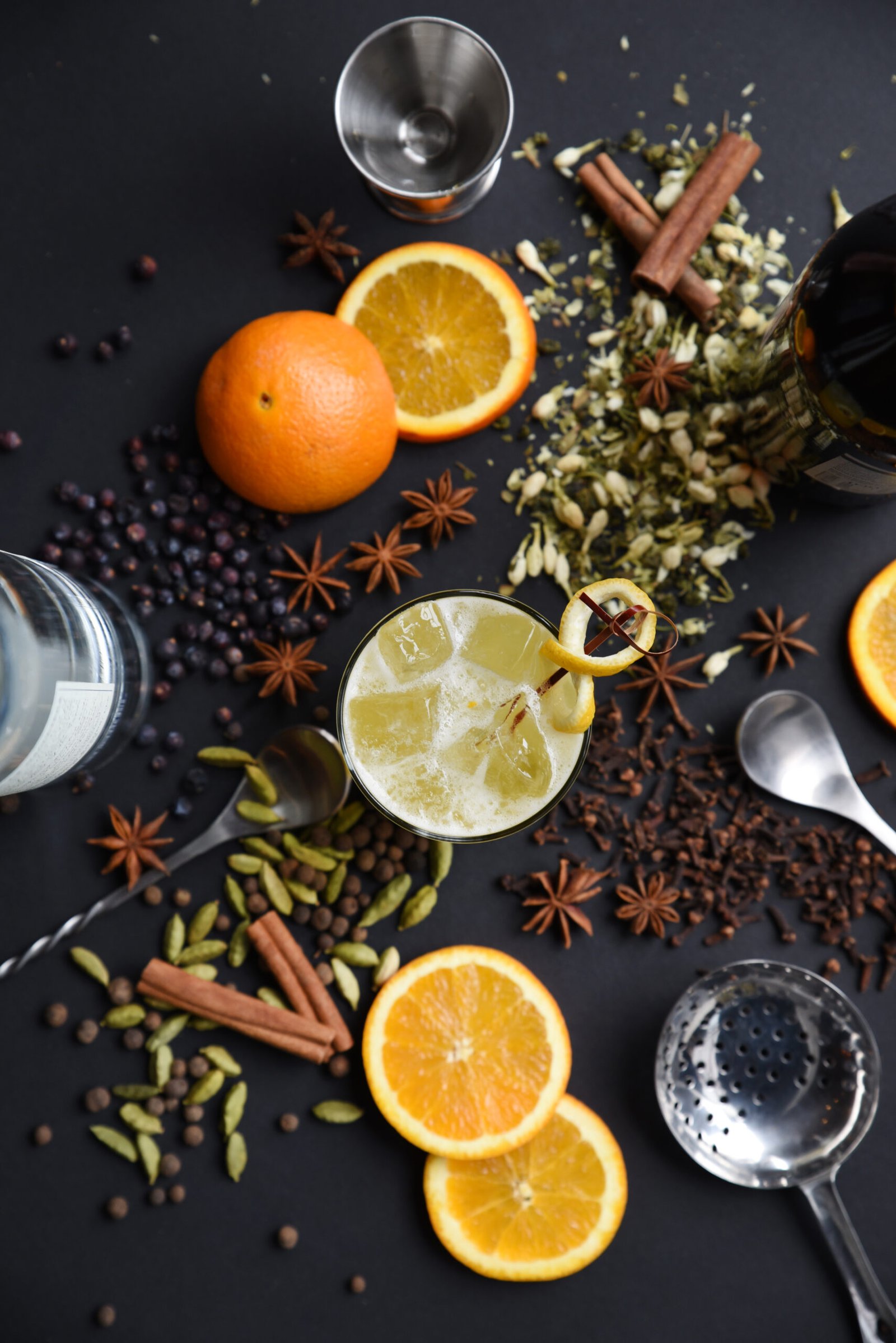Friday, 12 September 2025
3 Key F&B trends driving India’s Food & Beverage Industry in 2024
Personal health, sustainability, and enhanced sensorial experiences are the biggest consumer themes that will shape the sector in the country. By Vikram Vangale, Business Development Director, Taste, Indian subcontinent, Kerry.…

Personal health, sustainability, and enhanced sensorial experiences are the biggest consumer themes that will shape the sector in the country. By Vikram Vangale, Business Development Director, Taste, Indian subcontinent, Kerry.
Consumer behaviour has changed significantly in recent years and continues to evolve rapidly, influencing food and beverage trends.
Recent Kerry proprietary insights on the future of food and beverages show that consumers in India continue to prioritise their health by placing more importance on self-care. They are also adapting to a more sustainable lifestyle that focuses on conscious consumption and knowing where their food comes from. New sensorial experiences, particularly around traditional flavours and modern twists, are in demand. At the same time, they are also indulging more, as seen in the growing prominence of premium ingredients.
But how can product and menu developers tap into these trends to develop food and beverages people want? Understanding the flavours, ingredients and trends that will shape what we consume, is essential in guiding successful food innovation.
Consumers love fresh interpretations of traditional flavours
The Asian consumer is heavily influenced by the region’s diverse cultural traditions. According to Kerry’s research, Asia Pacific consumers are rediscovering the magic of their culinary heritage while looking for unique regional ingredients and flavour profiles. Findings from FMCG Gurus on innovative flavours mirror this, with 55% of consumers worldwide rating traditional flavours as a key influence on their food and drink choices.
Globalisation has also had a hand in introducing new international flavours to Indian consumers. For example, proprietary insights from Kerry’s 2024 Taste Charts show that locals are riding the K-wave as Korean flavours like gochujang and kimchi debut on the list. Other trending savoury flavours such as Szechuan, teriyaki, Thai curry, tom yum, and cajun indicate that consumers are looking for global fusion flavours. Elsewhere in the world, you’ll see this in unlikely pairings like a Thai curry with miso and rendang with gochujang in Thailand, Sichuan peppercorn ice cream in China, calamansi-infused yoghurt in the Philippines, or black sesame latte in Japan.
In the greater Asia Pacific, Middle East, and Africa (APMEA) region, there is also growing consumer interest in fermented foods and the health benefits they offer, from antioxidant to anti-inflammatory properties, leading to innovative dishes like charcoal-grilled skewers with fermented chilli paste. By harnessing the depth and complexity that fermented flavours bring, industry players can create products that satisfy the consumer craving for modern updates of their favourite traditional food.
Hot and spicy flavours are on fire
Kerry’s insights show that consumers are developing sophisticated taste preferences and bold flavours like hot and spicy appeal to many. People are always up for a challenge and enjoy pushing their boundaries when it comes to hot and spicy foods. Millennials and Gen Z even regard the ability to eat hot and spicy food as a life skill.
While the demand is widespread across the globe, hot and spicy is part of the Asian DNA with almost every cuisine claiming a variation of a chilli condiment. People want familiar spices but are also open to new types, further fanning the trend.
Insights from Kerry’s Taste Charts show that Indian consumers are going beyond generic chilli and spicy flavours. Different types of chillis and their distinct, specific tastes are key components in many food categories. Green chilli, chipotle, Szechuan, peri peri, sriracha, ghost chilli, habanero chilli, and jalapeno chilli are all trending locally. People are also keen on complex and nuanced heat experiences that, at the same time, offer authentic and exotic flavours. This includes region-specific spices, chillies and hyperlocal flavours.
Wellness and sustainability influence dietary habits
The emphasis on self-care has evolved from mere health-consciousness to prioritising health in food choices. A FMCG Gurus report on consumer perceptions of health and wellness shows that 68 per cent of global consumers have actively sought to improve their diet in the last two years.
Asia Pacific is unique in that consumers view sustainability and transparency as inherent to their well-being — the source of their food directly influences the quality of their health. The preference for local ingredients is strong; beverage flavours such as mango, masala, cardamom, and saffron in combination with nuts like almond, cashew, and pistachio and much more complex flavours like kulfi, ras malai are gaining popularity, indicating a resurgence of pride in local ingredients. This holds potential for innovation in sustainable flavours and solutions – people want food that supports their health and that they feel good eating.
Likewise, when it comes to beverages, Kerry Taste Charts data also reveals a rise in functional ingredients. Honey, ashwagandha, moringa, and fenugreek are piquing interest for their perceived health benefit that claims to boost mental alertness and physical performance.
As local consumer needs evolve, newer ingredients are appearing under an emerging premium category, indicating a demand for indulgence, which has led to the growing popularity of avocado, ruby chocolate, truffle, parmesan, cream cheese, sea salt, pesto, and yuzu.
Globally, Yuzu can be seen in recent launches like yuzu goes in South Africa, yuzu and pepper mayonnaise in China, and Yuzu low ABV wines and alcoholic beverages in Australia. What’s more, cold beverage passionfruit flavour appeared in 13 different global regions in Kerry’s Taste Charts, including as a key ingredient in India.
When it comes to plant-based products, health and sustainability concerns continue to be driving factors, but now novel flavours in meat and dairy alternatives are capturing consumer tastes. This has led to the rise of plant-based ingredients in many food and beverage offerings in India, such as almond milk, oat milk, chickpeas, jackfruit, rajma, lentils, and almond flour.
Understanding and delivering on market preferences
Today’s rapidly changing times often present challenges for food manufacturers and brands trying to deliver food and beverages people value. People have always been led by taste, especially when buying a product. Year on year, Kerry Taste Charts have become a reference tool for various stages of product development, whether brands are looking to add new offerings or check if their current product flavours are still in demand. Awareness is key; knowing that savoury flavours typically common in food are entering the beverage category for instance, can help influence innovation and development and help manufacturers identify where they can add the most value for their consumers.
To access the 2024 Kerry Taste Charts for the region of your choice, please click here.
Technology
Tetra Pak and Swan Neck Bio collaborate to simplify scaling of new food
Sep 11, 2025 | Company News
BASF launches world’s first thermoplastic polyamide
Sep 11, 2025 | Company News
Edacious and RAO enter collaboration to measure nutritional impact of regenerative organic certified agriculture
Sep 11, 2025 | Company News
Food Testing
Tetra Pak and Swan Neck Bio collaborate to simplify scaling of new food
Sep 11, 2025 | Company News
Edacious and RAO enter collaboration to measure nutritional impact of regenerative organic certified agriculture
Sep 11, 2025 | Company News
Illness to Wellness Foundation and PEFI launches ‘Swasth Haath, Swasth Bachpan’ campaign
Sep 09, 2025 | Food Safety and Testing
More Popular
DKSH strengthens ties with Suntory to drive beverage and wellness growth in Asia
Sep 12, 2025 | Beverages
Australia Essence brings authentic Australian premium brands to India
Sep 12, 2025 | Australia
Study shows Palatinose enhances response of gut hormones GLP-1 and PYY
Sep 12, 2025 | Food




